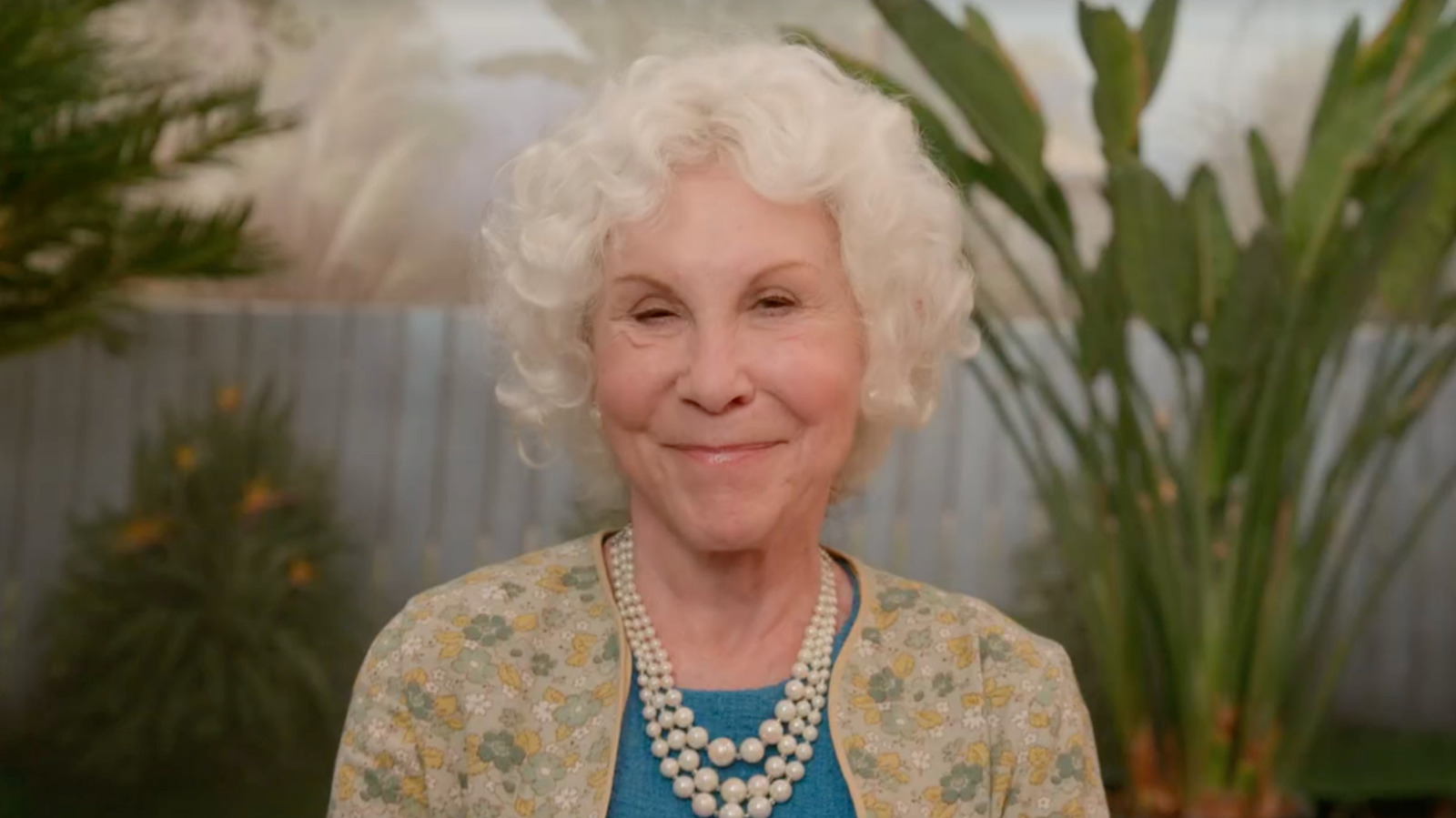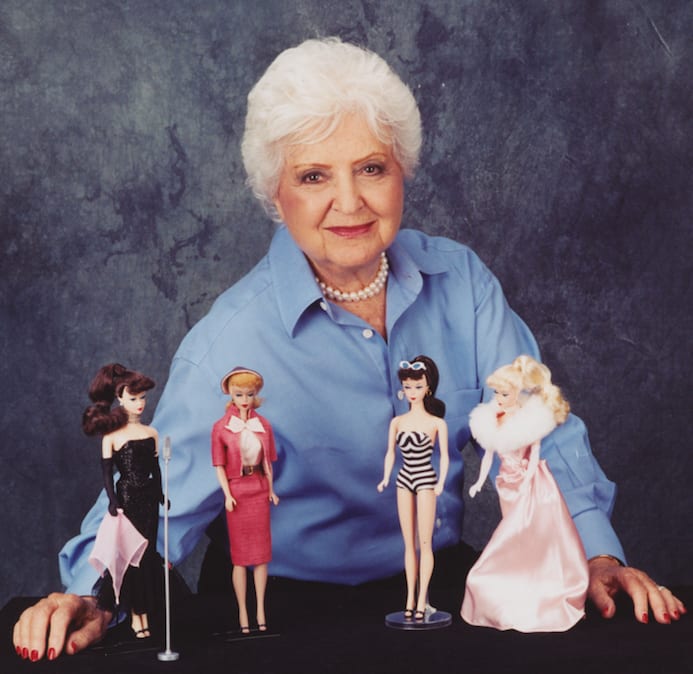Discover Ruth Handler: The Incredible Story Behind Barbie!
Ever wondered how a simple observation could birth a global phenomenon? Ruth Handler, the co-founder of Mattel and the visionary behind the Barbie doll, didn't just create a toy; she sparked a revolution. Her story is a testament to the power of female entrepreneurship and the profound impact of play on shaping young minds. Barbie wasn't merely plastic and perfectly coiffed hair; she represented a world of possibilities, a mirror reflecting the aspirations and dreams of generations. Handler's journey, etched with creativity and an unyielding belief in her vision, provides a unique lens through which to examine the evolving role of women in business and the ever-changing landscape of the toy industry. Her legacy is not just about a doll but about a woman who dared to challenge the status quo and empower young girls to imagine a future without limits.
This exploration delves into the extraordinary life and groundbreaking achievements of Ruth Handler, tracing her path from her formative years to the creation of Barbie and the lasting legacy she carved into the annals of popular culture. We will dissect the innovative concepts that propelled Barbie to international fame, analyze the doll's cultural significance as a symbol of female empowerment, and ultimately, underscore the timeless importance of creativity, perseverance, and a steadfast commitment to one's dreams. This article will illuminate the fascinating story of a woman who not only transformed the toy industry but also helped shape the aspirations of millions around the globe. It's a story of innovation, resilience, and the enduring power of a dream.
| Name | Ruth Marianna Handler |
|---|---|
| Birth Date | November 4, 1916 |
| Birth Place | Denver, Colorado, USA |
| Occupation | Toy Executive, Co-founder of Mattel |
| Notable Creation | Barbie Doll |
| Death Date | April 27, 2002 |
| Reference | Britannica |
Born Ruth Marianna Mosko in Denver, Colorado, on November 4, 1916, Handler's upbringing instilled in her a strong work ethic and an independent spirit. Her parents, Polish Jewish immigrants, ran a furniture store, providing her with early exposure to the world of business. This experience proved invaluable, shaping her understanding of customer needs and the importance of innovative product development. From a young age, Handler displayed a keen sense of observation and a knack for identifying unmet market demands, qualities that would later define her success as a businesswoman. Her early life was marked by a strong sense of self-reliance and a determination to forge her own path, laying the foundation for her future entrepreneurial endeavors.
Handler's pursuit of higher education led her to the University of Denver, but her ambitions soon extended beyond the academic realm. In the late 1930s, she made the pivotal decision to relocate to Los Angeles, California, a move that would forever alter the course of her life. It was in Los Angeles that she met her future husband and business partner, Elliot Handler. Their shared entrepreneurial spirit and complementary skills would eventually lead to the creation of one of the world's most iconic toy companies: Mattel. Together with Harold "Matt" Matson, they embarked on a business venture that initially focused on producing picture frames. Little did they know that their modest beginnings would soon pave the way for a revolutionary transformation of the toy industry.
Mattel's early success with picture frames stemmed from Elliot's talent for design and construction and Ruth's innate marketing abilities. Recognizing the potential for expansion, they began experimenting with dollhouse furniture made from scrap materials. This marked the company's initial foray into the world of toys. It was this shift in focus that set the stage for Handler's groundbreaking idea. While watching her daughter, Barbara, play with paper dolls, Handler observed that Barbara enjoyed assigning adult roles and scenarios to her dolls. This sparked a realization: the market lacked three-dimensional dolls that allowed girls to project their aspirations and imagine their futures. Existing dolls were primarily baby dolls, designed to encourage nurturing behavior. Handler envisioned something different a doll that empowered girls to dream beyond traditional roles.
In 1956, during a family trip to Europe, Handler encountered a German doll called Bild Lilli. This adult-figured doll, based on a cartoon character, provided the inspiration she needed to bring her vision to life. Recognizing the potential, Handler purchased the rights to Bild Lilli and began adapting the design to better suit the American market. She collaborated with engineers and designers to create a doll that was both aesthetically pleasing and durable enough to withstand the rigors of playtime. The result was Barbie, named after Handler's daughter, Barbara. The introduction of Barbie at the American International Toy Fair in New York City in 1959 marked a turning point in toy history. The doll's slender figure, fashionable wardrobe, and diverse career options immediately captivated the attention of young girls and sparked a mix of admiration and controversy among parents and critics.
- Royal Visit King Charles Camillas Italy Vatican Trip
- Jessica Chastain Latest News Photos Red Carpet Moments
Barbie's initial design, with its sleek ponytail, arched eyebrows, and stylish bathing suit, represented a significant departure from the traditional baby dolls that dominated the market. She was not a baby to be cared for; she was a young woman with a sense of style and a world of possibilities at her fingertips. This groundbreaking concept resonated deeply with young girls who were eager to explore different roles and identities. The introduction of Barbie's boyfriend, Ken (named after Handler's son), and a growing collection of accessories, friends, and family members further expanded the Barbie universe, allowing children to create intricate narratives and engage in imaginative play. This comprehensive approach to doll design and marketing set Mattel apart from its competitors and established Barbie as a cultural phenomenon.
Handler understood that effective marketing was crucial to Barbie's success. She pioneered the use of television commercials, targeting young girls directly and showcasing Barbie's fashionable wardrobe and exciting lifestyle. These commercials, often featuring catchy jingles and vibrant visuals, captured the imagination of children and created a strong demand for the doll. Handler also recognized the importance of celebrity endorsements and strategic partnerships to enhance Barbie's brand image. Over the years, Barbie has been associated with numerous high-profile personalities and brands, further solidifying her status as a cultural icon. This innovative approach to marketing, combined with Barbie's unique design and empowering message, propelled the doll to unprecedented levels of popularity.
Barbie's influence extends far beyond the realm of toys, permeating various aspects of popular culture. She has starred in numerous animated films, television shows, and web series, further expanding her reach and solidifying her position as a beloved character. Barbie's image has also graced the covers of magazines, appeared in fashion shows, and inspired countless works of art and design. Her impact on fashion is particularly noteworthy, with many designers drawing inspiration from her iconic style and incorporating Barbie-esque elements into their collections. The doll has also been a subject of academic study, with scholars analyzing her cultural significance and her role in shaping perceptions of femininity and beauty. Barbie's enduring presence in popular culture is a testament to her transformative power and her ability to adapt to changing societal norms and values.
The introduction of Barbie revolutionized the toy industry, setting a new standard for doll design and marketing. Handler's emphasis on individuality, career aspirations, and imaginative play transformed the way children interacted with dolls. Barbie's impact extended beyond toys, influencing fashion, media, and even education. The doll's diverse range of career options, from astronaut to doctor to teacher, encouraged young girls to dream big and pursue their passions. Barbie also played a role in promoting diversity and inclusivity, with the introduction of dolls representing various ethnicities, body types, and abilities. Today, Barbie serves as a tool for teaching young girls about the importance of self-empowerment, career exploration, and embracing their unique identities. Her influence on the toy industry is undeniable, paving the way for a new generation of dolls that celebrate individuality and encourage imaginative play.
Ruth Handler's legacy is firmly cemented in the continued popularity of Barbie and her ability to evolve with the times. The Barbie doll has embraced various cultures, body types, and professions, promoting inclusivity and representation. This commitment to diversity has helped Barbie remain relevant and appealing to a new generation of children. Handler's vision has inspired countless entrepreneurs and innovators in the toy industry and beyond. Her story serves as a reminder that with creativity, perseverance, and a belief in one's ideas, it is possible to transform an industry and empower millions of people around the world. Her impact on the toy industry and on the lives of young girls is immeasurable, making her a true pioneer and a role model for aspiring entrepreneurs.
Despite her remarkable success, Ruth Handler faced personal challenges throughout her life. She battled breast cancer, undergoing a mastectomy and later becoming a vocal advocate for early detection and awareness. The experience led her to develop Nearly Me, a line of prosthetic breasts for women who had undergone mastectomies. This venture reflected her commitment to empowering women and addressing unmet needs in the healthcare industry. Handler also faced scrutiny and criticism regarding Barbie's image and its potential impact on young girls' self-esteem. However, she remained steadfast in her belief that Barbie was a positive influence, providing girls with a platform to explore their dreams and aspirations. Despite these challenges, Handler remained resilient and continued to advocate for creativity and empowerment until her death in 2002. Her life story serves as a testament to the power of perseverance and the importance of following one's passion, even in the face of adversity.



Detail Author:
- Name : Xzavier McDermott
- Username : sdaniel
- Email : watson.mcdermott@gmail.com
- Birthdate : 1984-07-03
- Address : 46712 Trycia Run Suite 168 Rogahnton, AK 94480-5585
- Phone : +1-682-621-4274
- Company : Turner, Boyer and Schoen
- Job : Health Practitioner
- Bio : Explicabo voluptatem nostrum aut quis doloribus. Mollitia nisi sunt dolorem minima dolorem temporibus animi. Veniam voluptas quam sunt dolor.
Socials
linkedin:
- url : https://linkedin.com/in/crooksd
- username : crooksd
- bio : Sit omnis distinctio officia possimus.
- followers : 1098
- following : 2859
tiktok:
- url : https://tiktok.com/@dcrooks
- username : dcrooks
- bio : Recusandae excepturi quaerat quia. Iste maiores natus ut velit.
- followers : 4061
- following : 480
twitter:
- url : https://twitter.com/destini1609
- username : destini1609
- bio : Quibusdam omnis eum molestiae sit sed rerum deserunt. At veritatis excepturi veritatis fuga sit molestiae.
- followers : 1207
- following : 470
instagram:
- url : https://instagram.com/destini_official
- username : destini_official
- bio : Et quo quia natus numquam qui quisquam. Vitae officiis fugit nihil temporibus et.
- followers : 821
- following : 733